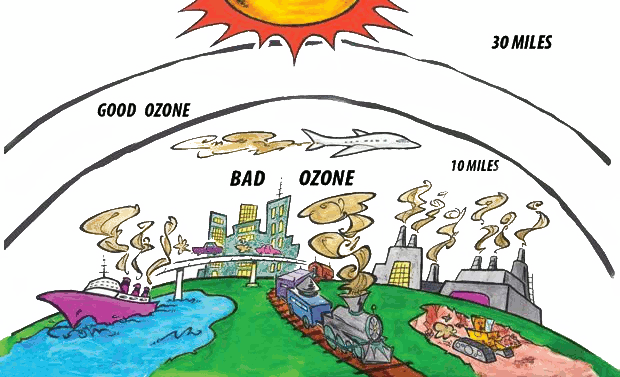
(Attribution: Houston Clean Air Network )
The ground Ozone Air Quality Index calculation has just been updated to follow the Instant Cast concept, i.e. to report the pollution right now instead of the pollution from the previous hours. For more information about the Instant Cast, please refer to this article.
The calculation for the Ozone Index is now using the hourly reading, instead of the previous 8 hours average, but still applying the same 8 hours AQI breakpoints formula for AQI below 100. The previous procedure for calculating the 8-hour average concentrations is not used any more for Instant reporting. Above AQI 100, the normal 1 hour Ozone breakpoints are used (while before, the AQI above 100 was defined as the maximum of the 1 hour and 8 hours readings).
The graph on the right is summarizing the breakpoints in use. The green line is the one corresponding the "Ozone Instant Cast" breakpoints in use on the World Air Quality Index project
|
The US EPA EPA is proposing to strengthen the National Ambient Air Quality Standards (NAAQS) for ground-level ozone, based on extensive scientific evidence about ozone's effects (more information). This new standard (plotted in grey in the above graph) is only for 8 hours average breakpoints, and since it is not yet approved - it is not used for the "Ozone Instant Cast" breakpoints.
For those interested in understanding how this scale compares with the scale used by other countries, the first important point to pay attention to is that the the concentration unit used for the scales can vary: For the US EPA, the Ozone concentrations are expressed in ppm (particles per million) while for many other countries, including India and China, it is expressed in µg/m3;
Therefore, the first step for comparing the scales is to use a primary concentration unit. In this case, ppm is kept as the primary unit. The conversion from µg/m3; is somewhat straightforward and consists in multiplying the number of particles by the molecular mass of the ozone times the density of air.
The density of air is dependent on the ambient temperature and atmospheric pressure, but, in order to simplify, a common assumption of a 25 degrees Celsius ambient temperature and 1 atmospheric pressure is used. Under those conditions, the following formula is used for the conversion:
Ozone Concentration (ppb) = 2.1414 x Ozone Concentration (µg/m3)
The scales can now be compared on the same ppm scale, and the two graphs below shows the respective scales for 8 hour and 1 hour. So, once again, as it has been seen many times before, the scales used outside of US are actually much more safe than the one in US!
